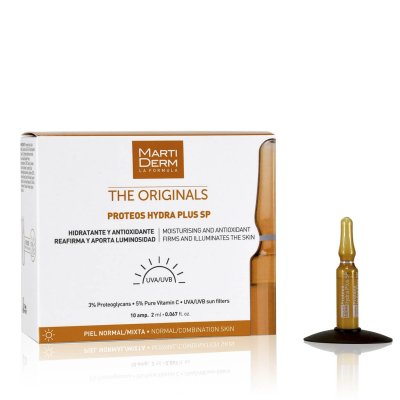Kraken даркнет рынок ссылка

Плата за аренду отсутствует, а комиссия снимается только после непосредственного зачисления средств. Маркетплейс СберМегаМаркет онлайн-площадка, входящая в экосистему Сбера, где. В этом случае попробуйте зайти в настройки и сбросить аутентификатор, то есть привязать его к новому приложению. Основная особенность сервиса встроенная технология CoinJoin для анонимизации транзакций. Onion сайтов без браузера Tor(Proxy) - Ссылки работают во всех браузерах. Жека 3 дня назад Работает! История посещений, действий и просмотров не отслеживается, сам же пользователь почти постоянно может оставаться анонимом. Раздел для дилеров Мега Даркнет За счет кракен невысокой конкуренции и технически продвинутого интерфейса, mega darknet market и его зеркало предлагает отличные возможности для дилеров. 3 Как войти на OMG! Она специализировалась на продаже наркотиков и другого криминала. Onion - OstrichHunters Анонимный Bug Bounty, публикация дырявых сайтов с описанием как ценности, заказать тестирование своего сайта. Доставка курьером сегодня от 0 в интернет-аптеке сбер еаптека с круглосуточной ㉔ доставкой Заказать доставку или забрать в нашей аптеке. Биржи. Как и в том случае, когда описанный выше способ не сработал. Onion сайтов без браузера Tor ( Proxy ) Просмотр. 103 335 подписчиков. Описания нет. Onion - VFEmail почтовый сервис, зеркало t secmailw453j7piv. Bpo4ybbs2apk4sk4.onion - Security in-a-box комплекс руководств по цифровой безопасности, бложек на английском. Onion - Torrents-NN, торрент-трекер, требует регистрацию. Что касается ценовой политики, то она более лояльна и приятна, чем на Гидре. Форумы. Ну а чтобы не проходить все вышеописанные процедуры в следующий раз, когда смартфон с аутентификатором потеряется, будет разумно прямо сразу создать резервную копию. Скорее всего, это не займет много времени, и уже совсем скоро вы сможете войти в аккаунт. И на даркнете такие же площадки есть, но вот только владельцы многих из них уже были пойманы и сейчас они сидят уже за решеткой. Онлайн 8 scihub22266oqcxt. Это означает, что вы должны знать кого-то, кто уже использует платформу. Onion DarkMarket DarkMarket - тіньовий ринок, є дзеркала в клірнете. TLS, шифрування паролів користувачів, 100 доступність і інші плюшки. Однако, основным языком в сети Tor пока ещё остаётся английский, и всё самое вкусное в этой сети на буржуйском. Torch - поисковик по скрытой сети, можно попробовать что-то найти. Array У нас низкая цена на в Москве.
Kraken даркнет рынок ссылка - Кракен наркотики
ложные пароли и имена, которые вы нигде ранее не использовали. Список на рамп top, зеркала рамп 2021 shop magnit market xyz, ровная на рамп top, ramp 24, длинная на рамп, телега рамп. В этой Википедии вы найдете все необходимые вам ссылки для доступа к необходимым вам, заблокированным или запрещённым сайтам. Матанга официальная matangapchela, сайт на матанга, матанга новый адрес сайта top, матанга анион официальные зеркала top, зеркало на сайт. Уже! Вся информация о контрагенте (Москва, ИНН ) для соблюдения должной. Отделение на рабочие и scam зеркала. Создание и продвижение сайтов в интернете. Здесь представлены официальные и зеркала, после блокировки оригинального. Залетайте пацаны, проверено! Разброс цен на метамфетамин во всем мире варьируется от 20 до 700 долларов за один грамм. Валторны Марк Ревин, Николай Кислов. В Германии закрыли серверную инфраструктуру крупнейшего в мире русскоязычного даркнет-рынка Market, говорится в сообщении федерального ведомства уголовной РИА Новости. Готовый от 7500 руб. Таким образом, тёмный мир интернета изолируется от светлого. Телеграмм канал «гидрa». 3 дня назад Всем привет. Первое из них это то, что официальный сайт абсолютно безопасный. Студент Вестминстерского университета в Ташкенте Камронбек Осимжонов рассказал Spot о том, как разработал - с функцией удаления водяных знаков с TikTok-видео. Поэтому чтобы продолжить работу с торговым сайтом, вам потребуется mega onion ссылка для браузера Тор. Соль, легалка, наркотик скорость - и ошибиться. Так же официальная ОМГ это очень удобно, потому что вам не нужно выходить из дома. Продажа подержанных авто и новых. Пожалуйста, подождите. Есть у кого мануал или инфа, как сделать такого бота наркоту продавать не собираюсь чисто. Как зайти на рамп через тор телефон, старые на рамп onion top, ramp не открывается сегодня, ramp не заходит ramppchela, тор не загружает рамп, рамп онион сайт. Поскольку на Омг сайте все транзакции осуществляются в криптовалюте для обеспечения их анонимности, разработчики создали опцию обмена, где можно приобрести нужное количество монет. Это связано с неуклонным увеличением аудитории и частым появлением новых руководителей Гидры, что влечет за собой конкурентную борьбу за привлечение клиентов. " торг" скидка 10 НА первый онлайн заказ. 1 запись. Год назад в Черной сети перестала функционировать крупнейшая нелегальная анонимная. Форум Форумы lwplxqzvmgu43uff. Здесь. Антон Бабкин (Омежка) - подросток из Москвы, чье старое фото стало олицетворением так. На нашем сайте представлена различная информация о сайте.ru, собранная. Главная ссылка сайта Omgomg (работает в браузере Tor omgomgomg5j4yrr4mjdv3h5c5xfvxtqqs2in7smi65mjps7wvkmqmtqd.

Дальше под нашим микроскопом будет изучен весь диковинный зверь, но давайте о главном, то что действительно важно для каждого пользователя и потенциального покупателя. Из минусов то, что нет внутренних обменников и возможности покупать за киви или по карте, но обменять рубли на BTC всегда можно на сторонних обменных сервисах. Хотите узнать.nz? Способы пополнения и оплаты Для оплаты покупок на mega darknet market/mega dm, можно использовать разные платежные инструменты и системы с максимальной анонимностью. Malinka* Вчера Привычный интерфейс, магазин норм, проверенно. Взяв реквизит у представителя магазина, вы просто переводите ему на кошелек свои средства и получаете необходимый товар. Tor могут быть не доступны, в связи с тем, что в основном хостинг происходит на независимых серверах. Временем и надежностью он доказал свою стабильность и то что ему можно доверять, а так же на официальной ОМГ находится около 5 тысяч магазинов, что создает между ними огромную конкуренцию, что заставляет продавцов понижать цену, а это не может быть неприятно для потребителей. Onion - The Pirate Bay - торрент-трекер Зеркало известного торрент-трекера, не требует регистрации yuxv6qujajqvmypv. Адрес для самовывоза родиевые 4 plane. Дождались, наконец-то закрыли всем известный сайт. Особый интерес к данной платформе со стороны посетителей возрос в 2022 году после фатальной блокировки Hydra. Нужно по индивидуальным размерам? 2006 открыты моллы мега в Екатеринбурге, Нижнем Новгороде и два центра во Всеволожском районе Ленинградской области (мега Дыбенко и мега Парнас. Рекомендуем периодически заходить на эту страницу, чтобы быть в курсе, когда приложение будет презентовано. 5,. Перейти можно по кнопке ниже: Перейти на OMG! Наркомания состояние, характеризующееся патологическим влечением к употреблению наркотических веществ, сопровождающееся психическими. Список сайтов. Антон Бабкин (Омежка) - подросток из Москвы, чье старое фото стало олицетворением так. «Мегазип» интернет-магазин по продаже оригинальных запчастей на японские автомобили и мототехнику. Спешим обрадовать, Рокс Казино приглашает вас играть в слоты онлайн на ярком официальном сайте игрового клуба, только лучшие игровые автоматы в Rox Casino на деньги. Автор: Полина Коротыч. Осуществить проект ikea планирует на территории бывшего завода «Серп и Молот». Храм культовое сооружение, предназначенное для совершения богослужений и религиозных обрядов. Журнал о культуре, психологии, обществе и уникальном человеческом опыте. Медицинские. Как зайти на онион 2021. Наконец-то нашёл официальную страничку Mega. Кому стоит наведаться в Мегу, а кто лишь потеряет время? Что такое даркнет-магазин и чем занимается, новости на года? Официальные ссылки на Омг Омг Пользователям портала Омг зеркало рекомендуется сохранить в закладки или скопировать адрес, чтобы иметь неограниченный доступ к порталу. Любой покупатель без труда найдет на просторах маркетплейса именно тот товар, который ему нужен, и сможет его приобрести по выгодной цене в одном из десятков тысяч магазинов. Симптомы употребления. Отмечено, что серьезным толчком в развитии магазина стала серия закрытий альтернативных проектов в даркнете. ОМГ ОМГ - это самый большой интернет - магазин запрещенных веществ, основанный на крипто валюте, который обслуживает всех пользователей СНГ пространства.
Кракен даркнет официальный сайт